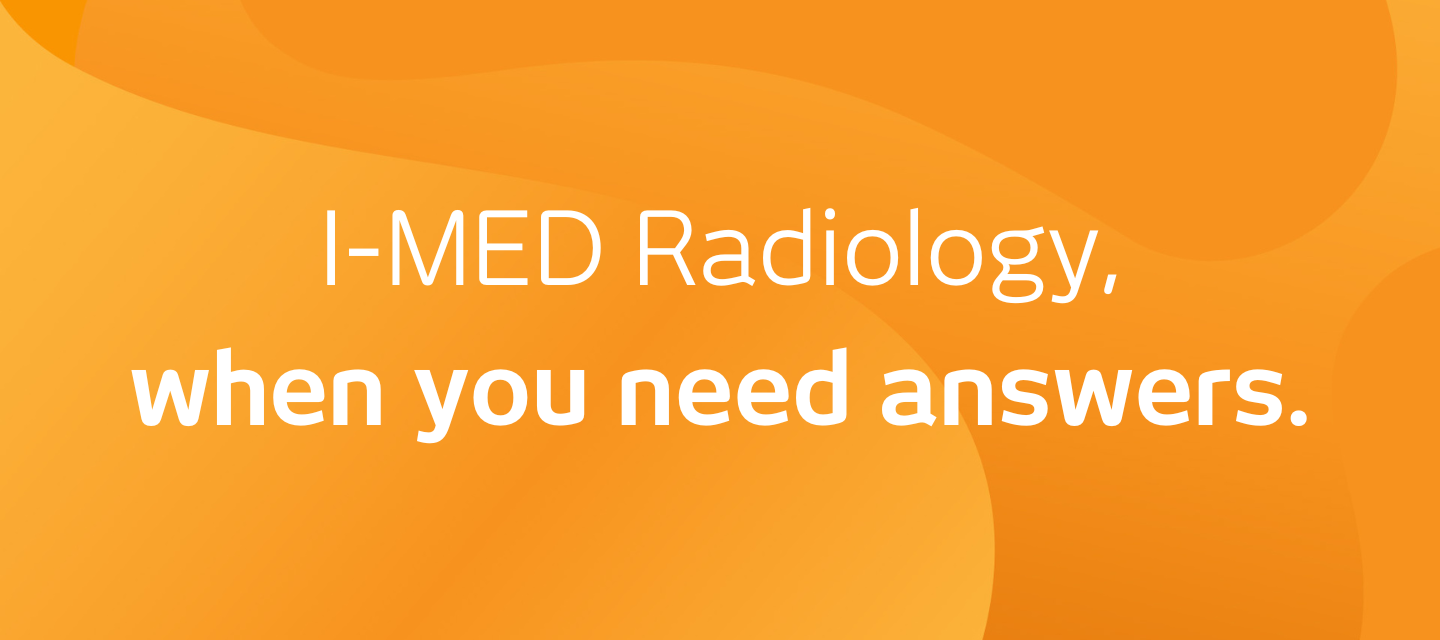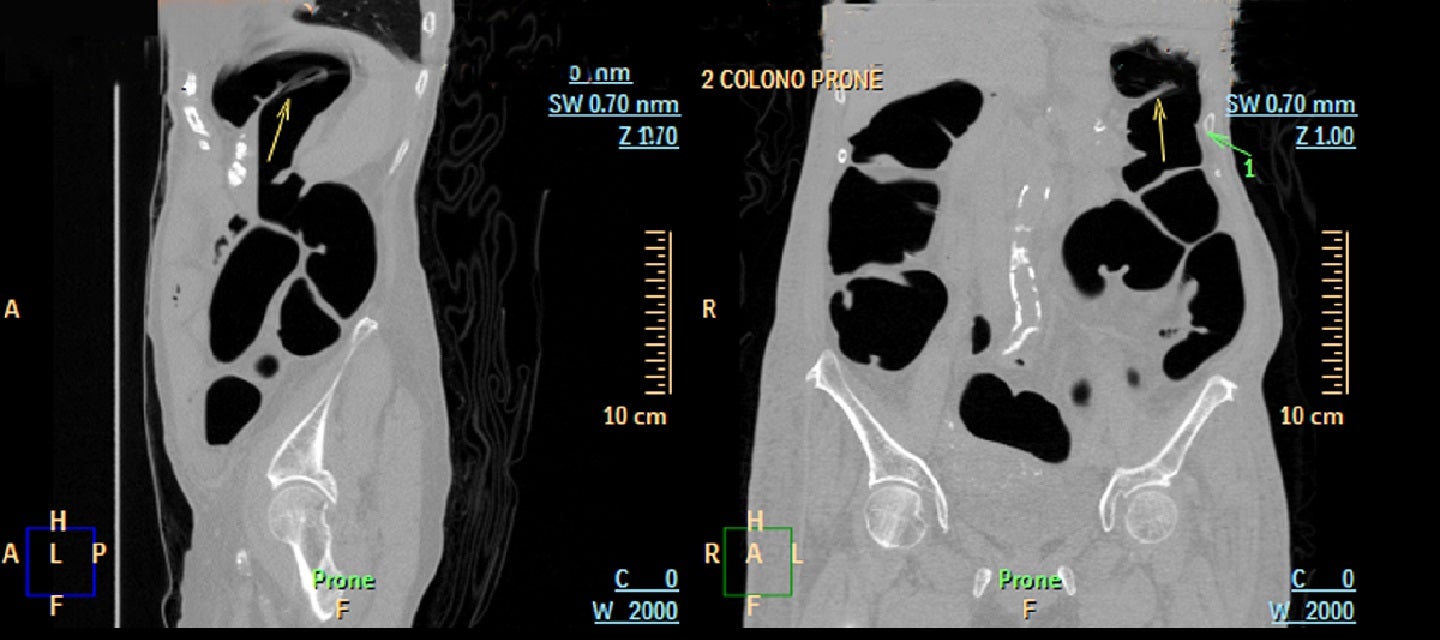

CT Colonography
CT Colonography

What is a CT colonography?
(Also known as CT colonoscopy, virtual colonography or virtual colonoscopy).
A computed tomography colonography (CTC), is a CT scan to look at the colon, or large bowel. A CT scan is a specialised x-ray test during which the patient lies on a moving table/bed as it passes through a circular x-ray machine. In order to study the large bowel, dietary preparation is required, usually for 1–3 days before the scan. This is to cleanse the bowel, and involves taking a prescribed laxative, similar to having other large bowel tests, such as barium enema or colonoscopy.
Why would my doctor refer me to have this procedure? keyboard_arrow_down
The main purpose of CTC is to look for cancer, or polyps, in the large bowel. Polyps are growths arising from the surface of the colon that may grow into cancers of the colon. If a cancer or significant sized polyp is found, you will need to have another test, such as a colonoscopy to biopsy (take a small tissue sample) or remove a polyp.
CTC is also excellent for diagnosing diverticulitis (where pouches develop in the wall of the colon) or as an investigation if you have symptoms suggestive of bowel problems.
Another reason to have a CTC is if you have had a difficult or an incomplete conventional colonoscopy, when the whole bowel may not have been completely or confidently assessed.
You must inform your doctor if you are pregnant. You should not have a CTC if you are pregnant.
How do I prepare for a CT colonography? keyboard_arrow_down
You will be given clear instructions when booking your appointment. The important thing is to have a clean bowel before the test, so that any polyp or cancer can be detected. The exact instructions may differ depending on any other medical problems you may have, such as diabetes, kidney disease or some heart problems. It is important to tell your referring doctor as well as the radiologist (specialist doctor) supervising the CTC about these. Pregnant women should not have this test.
The instructions will be provided as a package comprising written information, instructions and laxative pills. It is important to read and follow these instructions exactly. This preparation will encourage bowel movement, and you may need to go to the toilet more times than usual. Following these instructions and ensuring good bowel preparation is essential for an accurate result. It is important to read and follow the instructions exactly.
What happens during CT colonography? keyboard_arrow_down
When you arrive at the clinic or radiology department, you will be guided to a change room to remove your clothes and put on a simple gown. Then you will be taken to the CT scanner room, and asked to lie on the CT table/bed. A radiographer (who operates the CT scanner) or radiologist (specialist doctor) will explain the procedure as you go, and you can ask questions.
There are occasions when an intravenous injection is given to relax the muscle of the bowel wall to allow clearer images to be obtained. If this is done your vision may be mildly blurred and you will not be able to drive home. A small soft tube is placed in the back passage, or rectum, through which air or carbon dioxide is passed into your large bowel. This causes it to expand so that the inside wall of the bowel can be clearly seen on the CT scan images or pictures. You may or may not be given a small injection of a bowel muscle relaxant to help this process. As the air or carbon dioxide passes in, you will feel your abdomen become quite tight and bloated, this is often described as ‘uncomfortable fullness’, and you may feel like burping or passing wind. Occasionally, people may experience mild nausea, which usually passes quickly.
Two scans (usually taking between 3–10 seconds) will be taken, one while you are lying on your back and one while you are lying on your front. You will have to hold your breath for this short scan. Occasionally, the scan will be carried out while you lie on your side. The images will be checked, and you can relax and the tube will be removed. You will be able to go to a nearby toilet straight away. You can then get dressed and will usually be offered a drink and biscuit before leaving.
How long does a CT colonography take? keyboard_arrow_down
The actual time in the CT scanner room is usually approximately 10–20 minutes. You may spend extra time getting changed and toileting, depending on how you feel, before and after the test. If the radiologist is available to check your images straight away, you may be required to wait after the test.
What are the benefits of a CT colonography? keyboard_arrow_down
CTC is the safest and least invasive way of examining the whole large bowel. It does not require sedation hence you can continue a normal day after having the test.
Who does a CT colonography? keyboard_arrow_down
The CTC is carried out by a medical radiation or imaging technologist (MRT/MIT or radiographer) trained in operating the CT machine and a radiologist (specialist doctor). The radiologist will interpret the images and give a written report to your referring doctor.
What are the risks of a CT colonography? keyboard_arrow_down
A CTC is the safest way of examining the large bowel. There is a tiny chance of a bowel perforation from having a CTC. This would show up by having worsening abdominal pain.
In the unlikely event you are concerned after your test, it is important that you notify your doctor or the radiologist who carried out the test immediately, or go to the nearest hospital emergency department immediately. The rate of this rare complication ranges from 0–0.03% of patients having this procedure.
Because CTC uses x-rays, there is an extremely small radiation risk.
If you are pregnant, you should tell your doctor, and should not have this test.
Are there any after effects of a CT colonography? keyboard_arrow_down
After the test, your abdomen may feel uncomfortable, a bit ‘crampy’ or ‘bloated’ for a few hours. If this occurs, it usually passes quickly. You may be hungry or feel a little light-headed from not eating breakfast, our staff should offer you a drink and biscuit afterwards. You can eat as usual afterwards. If you have had the small injection to relax the bowel, it is unlikely, but possible, that your eyesight might be a little blurry for half an hour or so, and that your mouth might feel dry.
How do I get my results? keyboard_arrow_down
Your doctor will receive a written report on your test as soon as is practicable.
It is very important that you discuss the results with the doctor who referred you so they can explain what the results mean for you.
Most results are normal. Occasionally, small changes are seen that need further review.
If your results are normal you will be able to return for routine screening (usually every 2 years). If your results are uncertain or show changes you may need to consider additional imaging (diagnostic mammogram, ultrasound, or biopsy) in discussion with your referring doctor.
Related procedures

This information has been reviewed and approved by Dr Ronald Shnier (I-MED Chief Medical Officer).
Related articles

Related procedures

This information has been reviewed and approved by Dr Ronald Shnier (I-MED Chief Medical Officer).
Related articles

